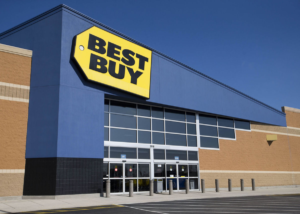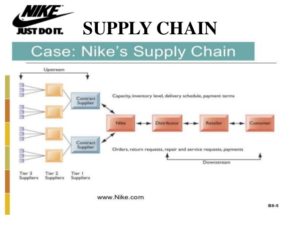There are myriad of industry resources that cling to building up e-commerce businesses with a great front-end customer experience and driving conversions with marketing.
On the contrary, there are hardly any, who are talking about the operational side of the e-commerce.
And, that’s terrible because in the hindsight you know how missing out on the esoteric tasks of filling up inventory, tracking goods, recording sales, restocking shelves, predicting future demands, and identifying any other long-standing loophole can work against your e-commerce business.
And we have proof,
In 2011, Best Buy’s Failure to Deliver Items on Christmas Loyal Customers

Nike’s Long-Lived Ordeal of Getting through the Operations

So, is there a secret to not let operations destroy your e-commerce business overnight?
Some dark magic formula that breaks through the barricades to save your business from running down to the nubs?
Not Surprisingly, Yes.
Let’s dig deep further here:
Al Ries, Chairman of the Consulting Firm of Ries and Ries in Atlanta says,
“Most of the bargain shoppers are impatient shoppers too. And, the easiest way to convert them into ideal brand advocates would be to focus on core operations.”
Scalable Procurement:
Drawing from AI Ries, let’s start with few simple issues in operations.
- When & how to deploy your resources (cost, time, and labor)?
- How to promote valued relationships?
- How to construct the ownership of actions and accountability of progress & ROI?
Since commercial enterprises depend a lot on supplied goods and services to get through the core business purpose, it’s crucial to have a right outlook to acquire the products and manage each individual section of the supply chain effectively, irrespective of who is performing the tasks.
And, this is where a scalable framework would come into play.

This is how ChiefProcurement.com defines Scalable Procurement:
“Scalable procurement is not just to authorizing people with desired professional skills to but giving non-practitioners in the organization the access to manage the balance of supply-side activity.’’
The right framework includes:
- Code of Conduct to procure entities
- Ethics of Gifts and hospitality
- Division of authority to even the subordinates
- Easy fraud management procedures
- Supplier due diligence checklist
- Responsible Sourcing Policy
- Effective Supplier relationship and performance management procedures
- Preferred supplier guidelines (who are the preferred suppliers for every category and why)
OmniChannel Maximisation
Among the top operations is the scenario where the offline & the online world are moving on two different tracks.
The sure thing is that the E-commerce businesses need to fill this gap.
But, an important question over here is how will they do this?
Let’s go to a recent past recent past and see how a brand could do it!
Fraport AG
It is a German airport company which also operates the Frankfurt Airport.

But, what is more, important for you to know here is that Fraport has another major service- the shopping service, called Fraport Store (or Frankfurt). It has over 300 retail outlets making Frankfurt the biggest shopping mall in Germany.
Back then, Fraport was just a big name in the offline market ie. for customers who visited the store at the airport.
To keep pace with the changes in technology, it soon opened an Online shopping for their users.
But to the surprise, it was still missing a huge chunk of travelers who got less time to drop by the store and were very busy traveling.
How Fraport Could do the Omni Optimisation
The concept was seamlessly executed so that the customers can shop online while flying or on the off hours of their wait time, as well as pick-up, drop, ship, or deliver from store to any location within the airport or off-airport.
Of course, Fraport had to completely change the complex UI/UX design of its warehouse management software, synchronize the stores, drop-shippers, and third-party logistics to achieve this bold step of omnichannel vision.
But in the end, it could finally do that.
Now, here’s a right question- Is this something that your E-commerce brand can also achieve?
What can be the OmniChannel Operations best practices that you should possibly consider?
Let’s have a look at some quick best practices
- Having a strategic plan
- Integrating your existing systems
To break this down further, integration of the existing systems could happen by channelizing the organizational silos and bridging the disconnect between all previous multi-channel supply chains
- Seeing technology as the liberator and picking up the right technology for your business
- Promoting your business through new channels
- Taking the right set of people
Fraud Management Detection
When you’re a smaller company, your orders are manageable and your fraud risk is relatively lower.
On the contrary, as orders increase, the issue of fraud management becomes crucial.
The backlog of orders demanding your review puts a lot of pressure in your operations, leading to:
longer fulfillment times and annoyed customers
shorter order review time to maintain promised fulfillment times and a higher rate of transactions as fraud slips through.
In such cases, a good fraud management tool comes to your rescue that not only gives you the right decision point but also backs it up with guaranteed protection.
As you scale, and margins are top of mind, it’s always advisable to offload your fraud liability for a low, predictable cost.
What tips do you have to overcome operations mismanagement?
Read about the above examples in detail below


